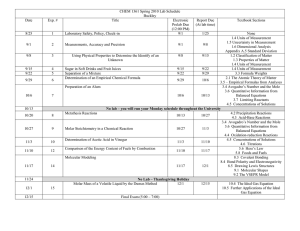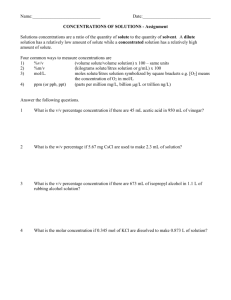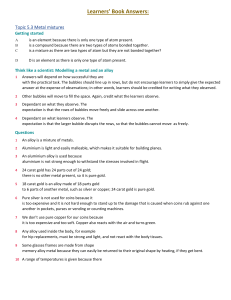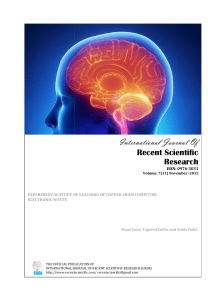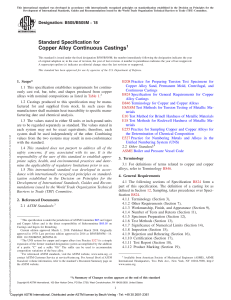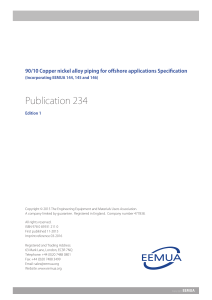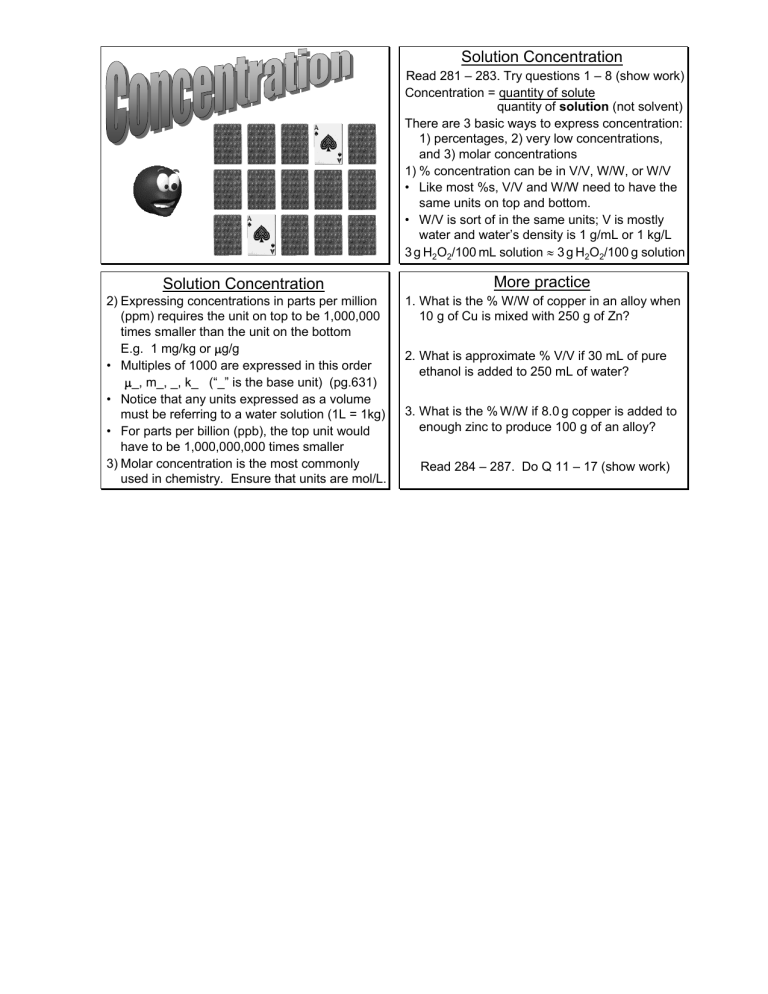
Solution Concentration Read 281 – 283. Try questions 1 – 8 (show work) Concentration = quantity of solute quantity of solution (not solvent) There are 3 basic ways to express concentration: 1) percentages, 2) very low concentrations, and 3) molar concentrations 1) % concentration can be in V/V, W/W, or W/V • Like most %s, V/V and W/W need to have the same units on top and bottom. • W/V is sort of in the same units; V is mostly water and water’s density is 1 g/mL or 1 kg/L 3 g H2O2/100 mL solution ≈ 3 g H2O2/100 g solution Solution Concentration More practice 2) Expressing concentrations in parts per million (ppm) requires the unit on top to be 1,000,000 times smaller than the unit on the bottom E.g. 1 mg/kg or μg/g • Multiples of 1000 are expressed in this order μ_, m_, _, k_ (“_” is the base unit) (pg.631) • Notice that any units expressed as a volume must be referring to a water solution (1L = 1kg) • For parts per billion (ppb), the top unit would have to be 1,000,000,000 times smaller 3) Molar concentration is the most commonly used in chemistry. Ensure that units are mol/L. 1. What is the % W/W of copper in an alloy when 10 g of Cu is mixed with 250 g of Zn? 2. What is approximate % V/V if 30 mL of pure ethanol is added to 250 mL of water? 3. What is the % W/W if 8.0 g copper is added to enough zinc to produce 100 g of an alloy? Read 284 – 287. Do Q 11 – 17 (show work)

